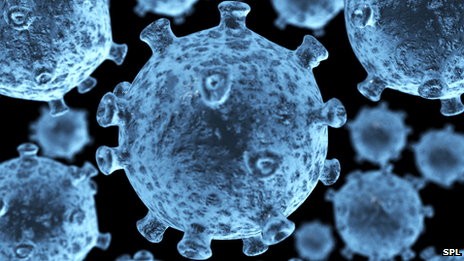US researchers have announced that it may be possible to use a patient’s own skin to repair the damage caused by multiple sclerosis (MS), which is currently incurable.
Nerves struggle to communicate in MS as their insulating covering is attacked by the immune system – causing fatigue and damaging movement.
Animal tests, described in the journal Cell Stem Cell, have now used modified skin cells to repair the insulation.
Experts said there was an “urgent need” for such therapies.
Just like electrical wires, nerves have insulation – but instead of plastic, the body uses a protein called myelin.
However, diseases that result in damage to the myelin, including MS, leave the nerves exposed and electrical signals struggle to travel round the body.
A team of scientists at the University of Rochester Medical Center, in the US, used advances in stem-cell research to attempt to repair the myelin.
They took a sample of human skin cells and converted it into stem cells, which are capable of becoming any other type of cell in the body.
The next step was to transform the stem cells into immature versions of cells in the brain that produce myelin.
When these cells had been injected into mice born without any myelin it had had a significant effect, said researchers.

US researchers have announced that it may be possible to use a patient’s own skin to repair brain damage caused by MS
Dr. Steven Goldman explained that “myelin was produced throughout the nervous system” and some mice had achieved “normal life spans”.
He said: “In MS the underlying nerves fibres are still there, the objective is to re-myelinate them.”
However, MS patients would still have the problem of their immune system attacking their myelin.
Any treatment would need to be used alongside other therapies to tame the immune system – or would need to be repeatedly performed.
Dr. Steven Goldman said he could see “no reason to be pessimistic” although further safety tests would be needed and the technique still needed to be refined before being used in people. He expects to begin trials within a couple of years.
An international research team has shown how some cells in the body can repel attacks from HIV by starving the virus of the building blocks of life.
Viruses cannot replicate on their own; they must hijack other cells and turn them into virus production factories.
The study, published in Nature Immunology, showed how some parts of the immune system destroy their own raw materials, stopping HIV.
It is uncertain whether this could be used in therapy, experts caution.
HIV attacks the immune system and can weaken the body’s defenses to the point that everyday infections become fatal.
However, not all parts of the immune system become subverted to the virus’ cause. Macrophages and dendritic cells, which have important roles in orchestrating the immune response, seem to be more resistant.
In 2011, researchers identified the protein SAMHD1 as being a critical part of this resistance. Now scientists believe they know how it works.
The scientists have shown that SAMHD1 breaks down the building blocks of DNA. So if a cell needs to make a copy of itself it will have a pool of these building blocks – deoxynucleoside triphosphates or dNTPs – which make the new copies of the DNA. However, they can also be used by viruses.
The study, by an international team of researchers, showed that SAMHD1 lowered the levels of dNTPs below that needed to build viral DNA and prevented infection. When they removed SAMHD1 then those cells had higher levels of dNTPs and were infected by HIV.
The report said: “By depleting the pool of available dNTPs, SAMHD1 effectively starves the virus of a building block that is central to its replication strategy.”

HIV attacks the immune system and can weaken the body's defenses to the point that everyday infections become fatal
It is possible for macrophages and dendritic cells to produce SAMHD1 as they are “mature cells” which do not go on to produce new cells.
Prof. Baek Kim, one of the researchers from the University of Rochester Medical Center, said: “It makes sense that a mechanism like this is active in macrophages.
“Macrophages literally eat up dangerous organisms, and you don’t want those organisms to have available the cellular machinery needed to replicate and macrophages themselves don’t need it, because they don’t replicate.
“So macrophages have SAMHD1 to get rid of the raw material those organisms need to copy themselves. It’s a great host defense.”
Dr. Jonathan Stoye, virologist at the Medical Research Council National Institute of Medical Research, was part of the team which determined the chemical structure of SAMHD1 last year and predicted that it would attack the dNTPs.
“We hypothesized that it works in this fashion and the paper tells us we were right. It is depleting cells of these dNTPs, in cells which are not proliferating (dividing).”
However, some cells do need to divide to boost numbers as part of the immune defence. Such as CD4 cells which are the prime target for HIV infection.
“Cells which are proliferating would be in trouble if we took dNTPs away,” Dr. Jonathan Stoye said.
He added: “How we can use the anti-retroviral action of this protein is not clear to me.”


